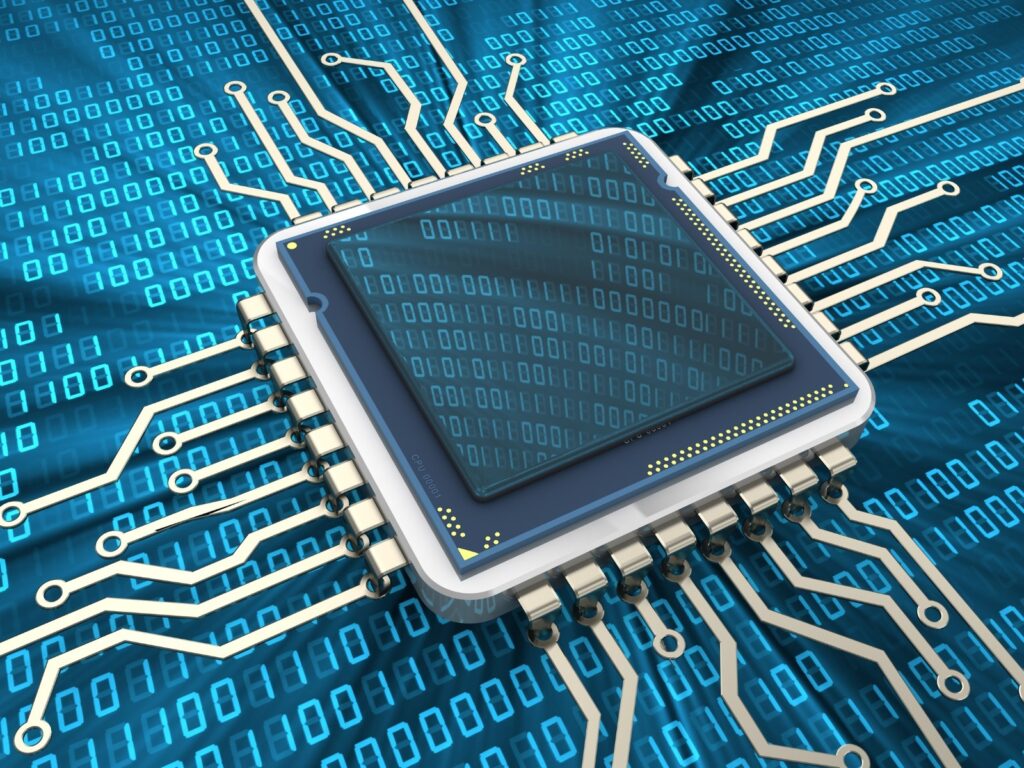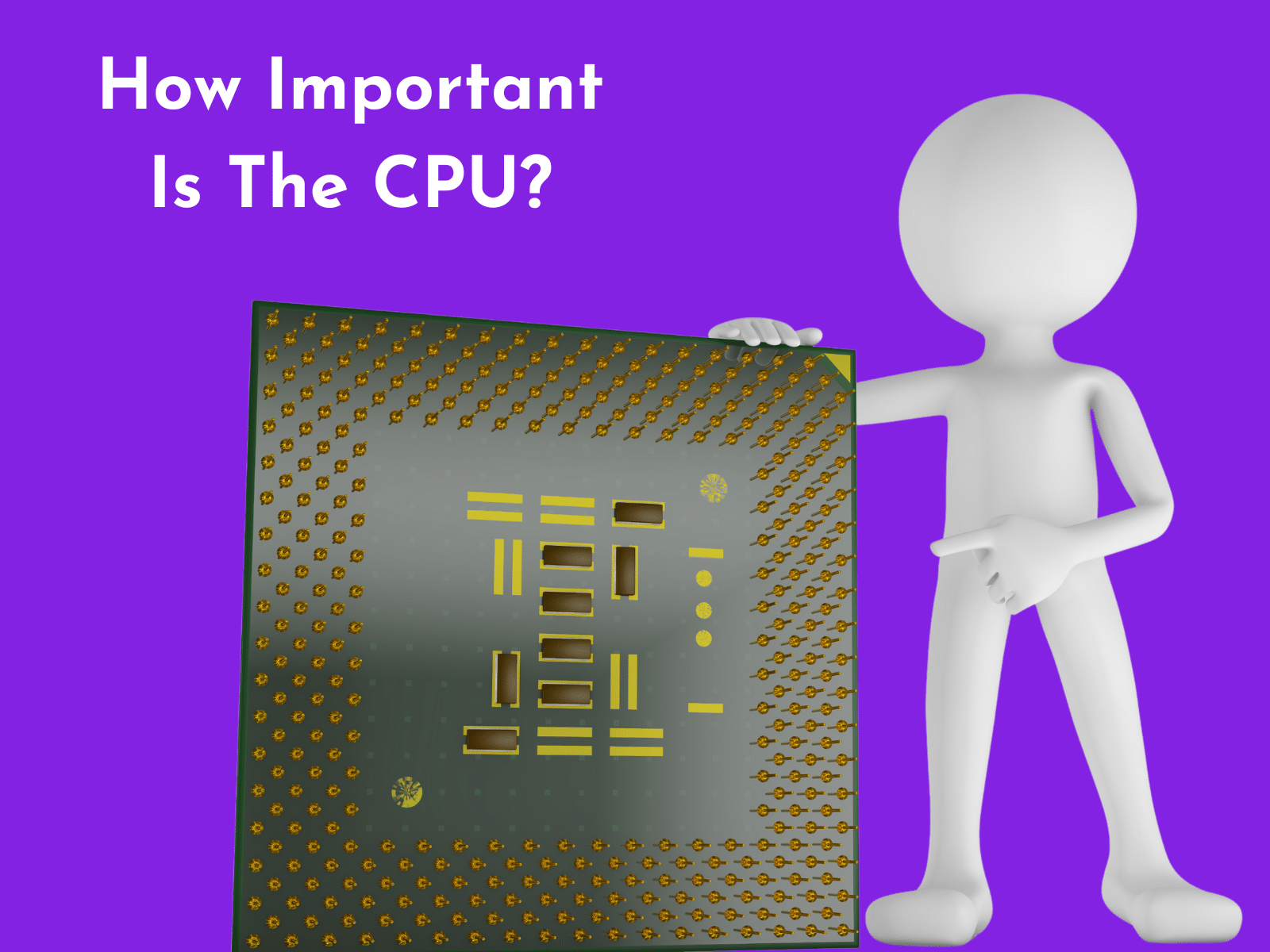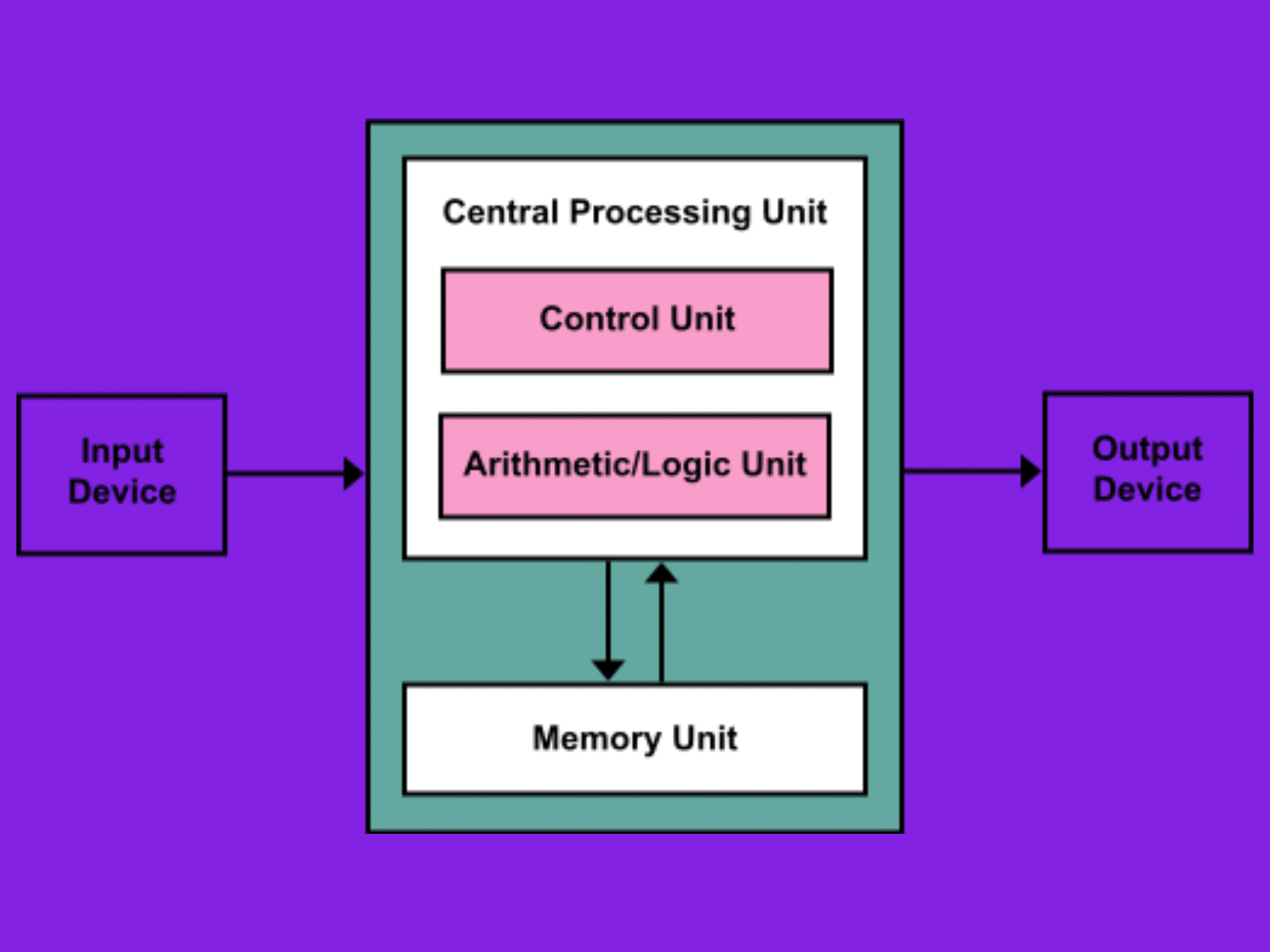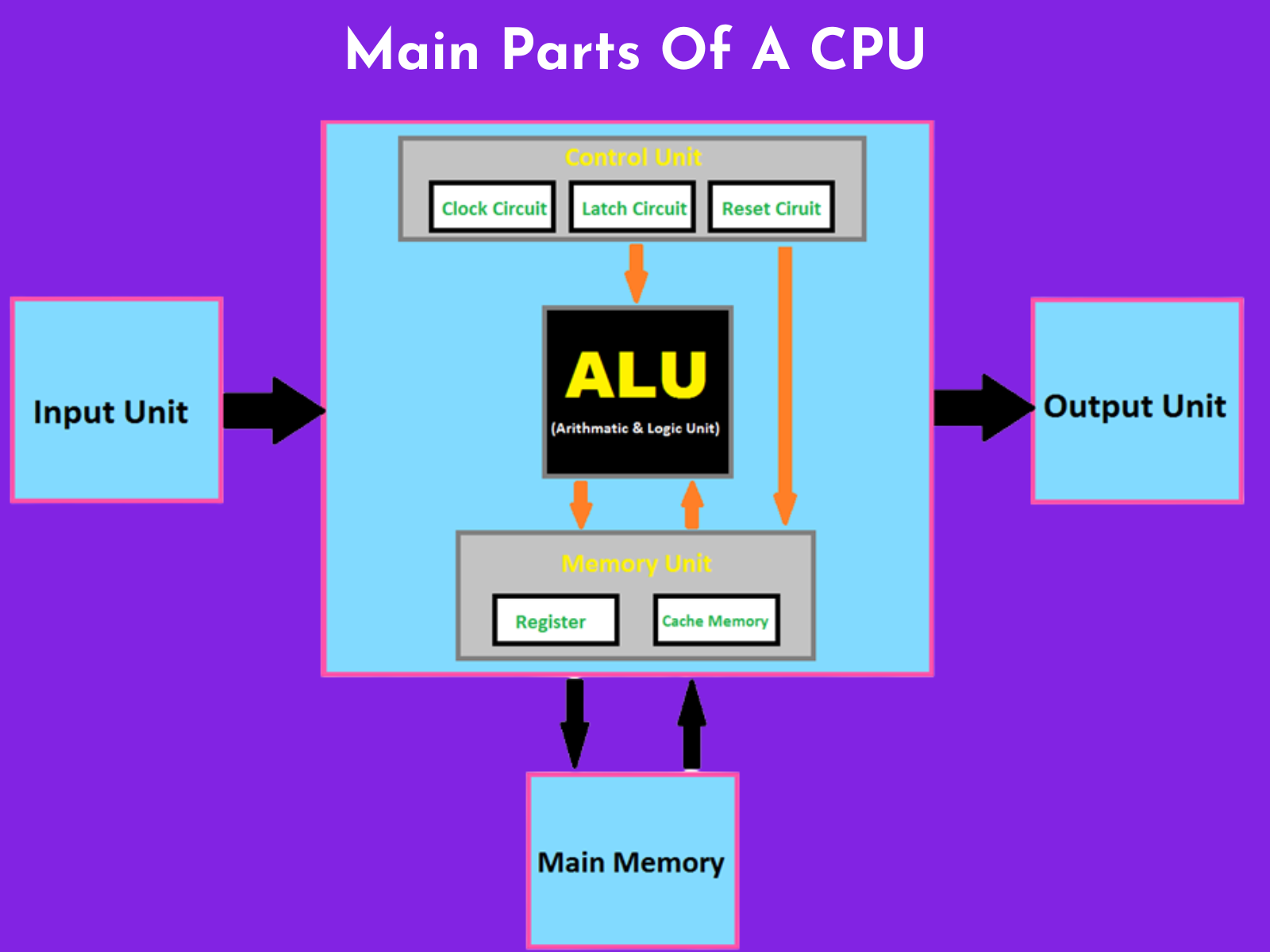CPU stands for Central Processing Unit. It is a key piece of hardware in a computer that does most of the processing work. A CPU (Central Processing Unit) is the basic component of a computer system responsible for processing instructions. It is often referred to as the “brain” of a computer. The CPU processes data by retrieving instructions from memory and executing them.
When it comes to computers, the CPU (Central Processing Unit) is often referred to as the brains of the operation. A central processing unit (CPU) is a processor that is in charge of carrying out the instructions of a computer program by doing the basic arithmetic, logic, controlling, and input/output (I/O) operations that the instructions tell it to do.
In this blog post, I’ll be explaining what a CPU is and how it works. I’ll also be discussing the different types of CPUs, their capabilities, and why they are important to the functioning of computers.
What You Need to Know About a Central Processing Unit (CPU)?

The Central Processing Unit (CPU) is one of the most important parts of a computer, as it acts as the brain of the machine. The CPU can process all the information and it is responsible for executing all of the commands that make your device run, from simple tasks like calculations to complex operations like playing games.
The CPU is responsible for fetching, decoding, and executing instructions from the operating system. It is made up of transistors, which are tiny switches that can be either on or off. Each transistor holds a binary value, either 1 or 0, and these values are used to perform calculations.
The CPU is located on the motherboard and is part of the overall workload that the computer must do. It can be used as a powerful calculator that can do tasks hundreds or even thousands of times faster than a person. Some modern CPUs have multiple cores, which means they can execute multiple instructions at once. This allows them to perform more complex tasks in much less time than a single core processor.
The speed at which a CPU operates is measured in clock speed, which is measured in hertz (Hz). Most modern CPUs have clock speeds of 3 GHz (gigahertz) or higher, allowing them to process more instructions per second.
In gaming, a CPU helps the graphics card handle its work so that the graphics are smoother and the game loads faster. A processor with multiple cores will also provide an advantage over a dual-core processor in terms of performance, as it can handle more tasks simultaneously. In order for the processor to perform at its best, it should also be paired with other components that can keep up with its speed and power.
Overall, the CPU is an incredibly important part of any computer system, and understanding its role and how it works is essential for anyone looking to build or upgrade their machine. With modern CPUs featuring multiple cores and high CPU clock speeds, users can expect top-notch performance from their machines for years to come.
Read More:
- APU vs CPU vs GPU in Gaming: What’s the Difference?
- Understanding the Difference Between CPU Vs GPU Vs TPU: A Complete Overview
How Important Is The CPU?

The CPU, or central processing unit, is one of the most important parts of any computer. It is the brain of the machine, performing the calculations and commands that enable the computer to function. Without it, nothing would work.
The CPU is in charge of carrying out the instructions that come from the user or the operating system. It does this by fetching instructions from memory and processing them according to a set of rules called an “instruction set.” The CPU then passes the result to memory or I/O devices, depending on what was asked for.
Clock speed is one of the most important components of a CPU’s performance. This is measured in gigahertz (GHz) and shows how many instructions per second the processor can run. A higher clock speed means that the CPU can execute more instructions in the same amount of time, making it more powerful.
Modern CPUs have more than one core, which are like mini-CPUs packed into a single package. Each core can handle instructions on its own, so the computer can do more than one thing at once. For example, if you were playing a game and listening to music at the same time, each core could be dedicated to performing a different task.
A multi-core processor also makes the CPU more effective because it can better use the resources it has. By distributing tasks among multiple cores, each processor core can spend less time waiting for data and more time executing instructions.
What Does A CPU Actually Do?

The Central Processing Unit (CPU) is the brain of a computer, and it carries out every instruction given to it. It’s the main part of the computer that performs calculations and makes decisions. The CPU contains two main components: the control unit and the logic unit.
The control unit handles commands from the operating system and user input, while the logic unit carries out those instructions. The CPU gets data from memory and then follows a set of instructions, one after the other. This process is repeated at an incredibly fast rate, measured in clock speed, which is the number of calculations a processor can do per second.
Modern CPUs are designed with multiple cores. Each core is like a separate processor, so it can handle more than one instruction at once. This greatly increases the speed of processing data. A multi-core processor can be faster than a single-core processor because it can process more instructions at once.
The CPU is an essential part of any computer, and it is responsible for running all of your programs and applications. It processes commands quickly and accurately and allows you to perform tasks efficiently. With the advancement of technology, CPUs have become more powerful, efficient, and able to handle more complex tasks in less time.
Read More:
- CPU vs. GPU Rendering – What’s the difference, and which should you choose?
- CPU And GPU Bottleneck: What is it and How to Fix it?
What Makes A CPU Good?
When evaluating a central processing unit (CPU) for use in a computer system, there are several factors to consider. Clock speed is one of the most important criteria for determining the performance of a CPU. It is a measure of the rate at which the CPU can execute instructions and is measured in hertz (Hz). The higher the clock speed, the faster the processor can perform tasks.
Hyper-threading is another important feature of modern CPUs that allows them to process multiple threads of instructions simultaneously. This improves performance, making it possible for programs and operating systems to respond quickly and effectively.
The number of cores present in a CPU is also an important consideration.
A single-core processor is capable of executing one instruction at a time, while a multi-core processor can execute multiple instructions in parallel. Multi-core processors are becoming increasingly popular in modern CPUs due to their superior performance.
CPUs play an important role in gaming as well. High-end gaming PCs often have powerful CPUs with multiple cores and fast clock speeds. This lets games run smoothly and respond quickly, and also lets textures and other graphics have a high resolution.
To sum up, there are several important factors that make a CPU good. A fast clock speed, hyper-threading, and multiple cores all help improve performance, and the processor’s control unit and logic unit make it possible for instructions to be carried out quickly and effectively. For the best performance, gamers should look for CPUs with fast clock speeds and multiple cores.
What Are The Main Parts Of A CPU?
The main parts of a CPU include the Control Unit, The Logic Unit, and the Arithmetic/Logic Unit. The control unit is in charge of getting instructions from the operating system, decoding them, and putting them into action. The logic unit is responsible for performing logical operations such as comparing numbers or calculating data values. Finally, the arithmetic/logic unit performs arithmetic operations such as adding and subtracting numbers.

At the heart of any modern CPU are an arithmetic logic unit (ALU), the main storage, and the control unit. The ALU is in charge of math operations like addition and subtraction, as well as logic operations like comparing two things and making logical decisions. This part of the CPU is where most of the computing happens.
The main storage unit stores data that will be processed by the CPU. It also contains instructions that are necessary for the CPU to perform its tasks.
The control unit is responsible for managing the flow of data between the CPU, main memory, and other parts of the computer system. It also controls the operating system, allowing it to access various programs or applications.
In order to work as efficiently as possible, a modern CPU will have more than one core, which lets it get and run more than one instruction per second. A processor core is a single physical processor inside a CPU, while a multi-core processor is a single processor with multiple cores.
Related Reading:
- Can An APU Replace Your Graphics Card?
- What Are NVIDIA CUDA Cores And What Do They Mean For Gaming?
- How To Check The CPU And GPU Temperature In Windows 11 Or 10?
- How To Know If All Your PC Parts Are Compatible?
Final Thoughts
A CPU is a tiny but vital component of a computer’s hardware. It is usually on a circuit board, which is where all the important parts of a computer are located. A CPU works with both hardware and software to carry out instructions and do other things that a computer system needs to do. Many modern CPUs have more than one processing unit, and some designs have more than one CPU on a single chip.
The physical CPU is the main chip in a computer’s hardware, and it is responsible for executing instructions that are stored in memory. The earliest CPUs contained a single processor core, which meant that they could only process one instruction at a time.
But as technology has improved, CPUs with more than one processor core have become possible. For example, a dual-core CPU has two separate processing units that can run instructions at the same time. This can greatly improve the performance of a computer.
Understanding CPU specifications is essential for selecting the right hardware for a computer system. Specifications such as clock speed, cache size, and the number of cores can greatly impact the performance of a CPU.
Additionally, the main CPU chip can be paired with other components, such as graphics processors or memory controllers, to further improve a computer’s capabilities. Overall, the CPU is a very important part of any computer system. Knowing how it works and what it can do will help you choose the right hardware for your needs.
